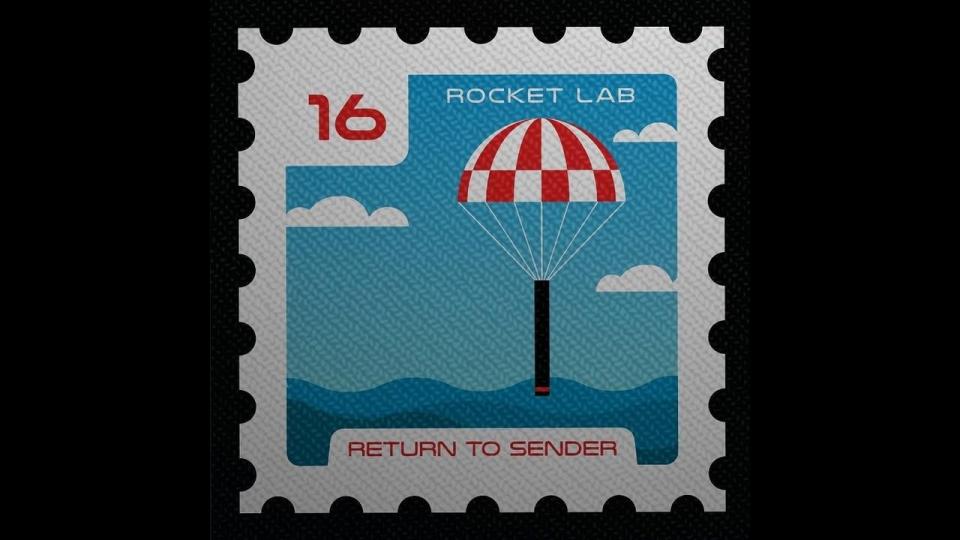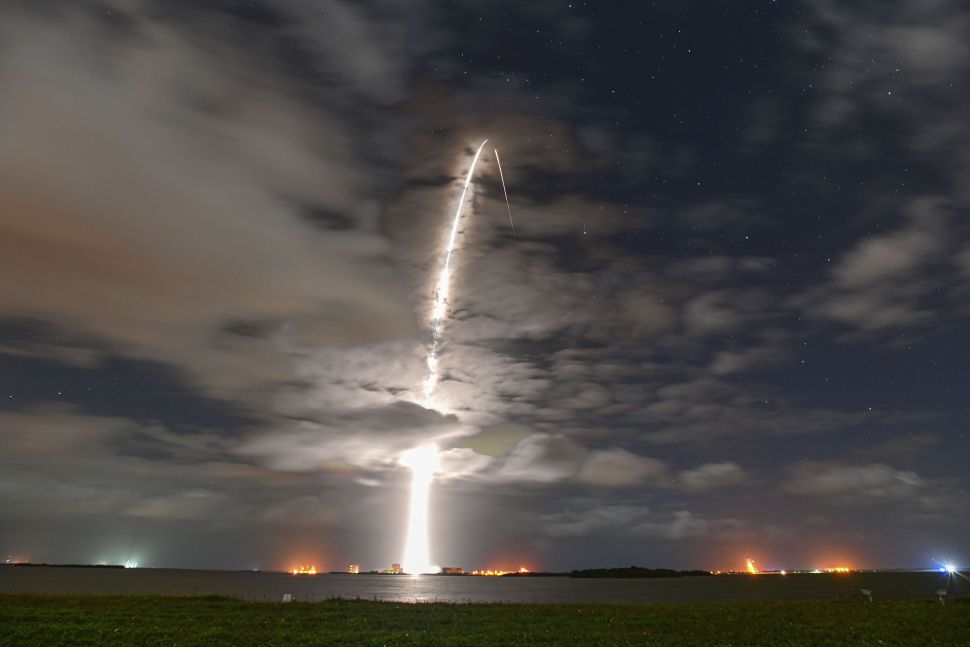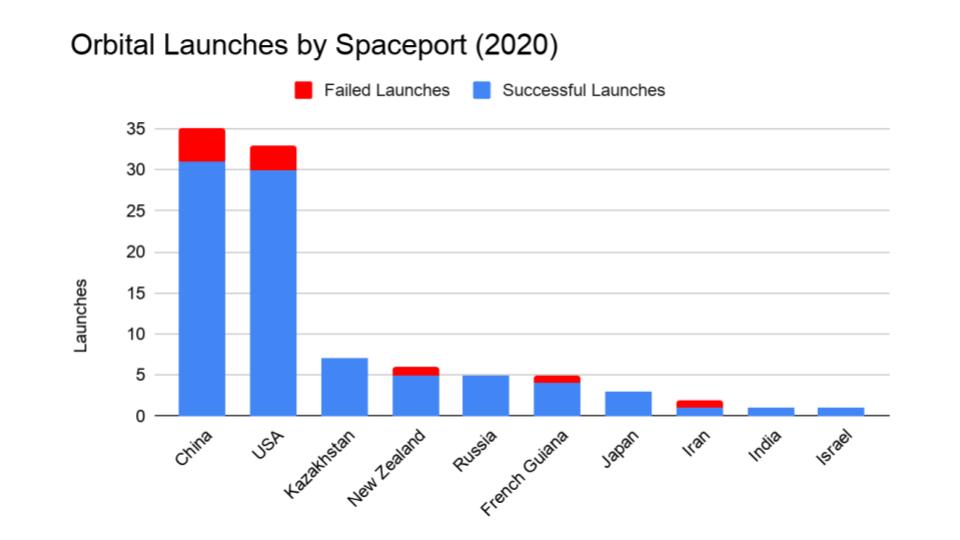Media
Summary
Join us for this week’s Rocket Roundup with host Dr. Pamela Gay as we look back at the launches that happened from the past week, including a fun and important Rocket Lab launch, two launches from SpaceX, and the Chang’e 5 mission to the Moon.
Transcript
Hello, and welcome to the Daily Space for today Wednesday, November 25th, 2020. I am your host Dr. Pamela Gay. Most weekdays we’re here putting science in your brain.
Usually, Wednesdays are for Rocket Roundup, so let’s get to it, shall we?
On November 16th at 02:20 UTC, Rocket Lab made its sixteenth Electron launch from the Mahia Peninsula on the North Island in New Zealand.

This launch carried 30 small payloads into orbit, including 24 0.25-unit microsatellites for Swarm Communications.
Also on board was a pair of CubeSats called Dragracer, designed to demonstrate a new deorbit tether technology. According to the manufacturer TriSept, the baseline spacecraft will decay in 6 to 9 years, and the spacecraft with the tether will decay in 45 days.
The next spacecraft on the mission was APSS-1, a student-built spacecraft developed to determine whether ionospheric activity is related to earthquakes.
Another pair of CubeSats, BRO-2 and BRO-3, for French company Unseenlabs will use radio emissions to track ship movements.
Lastly on the mission was a 150-mm tall mass simulator in the shape of Gnome Chompski from the video game Half-Life 2. The mass simulator was made using a new metal 3D printing method by Weta Workshop, an award-winning design studio. This mass simulator has special significance: Valve Corporation CEO Gabe Newell, the creator of Half-Life 2, announced that he would be donating $1 for every viewer watching Rocket Lab’s official broadcast to Starship Children’s Hospital in New Zealand. In the end, nearly NZ$300k was raised for the hospital.
As the launch progressed, several popups in the style of Steam achievements appeared on the broadcast, denoting various events like liftoff and stage separation.

The Return to Sender patch is in the shape of a postage stamp, as a nod to the name of the mission. In the top left corner is the number 16, representing the sixteenth Electron launch. The patch features the Electron first stage descending under a red and white parachute into the sea. In the background, there are white clouds, a clear blue sky, and the waves of a gently rolling ocean.

In addition to a successful launch, Rocket Lab successfully recovered the first stage using a parachute system. This is the first time they have done this, having gathered data on previous missions with no recovery attempt. This image was posted by Rocket Labs CEO Peter Beck on his Twitter after the launch and shows the Electron first stage floating in the water with the parachute around it. During a press conference later, Beck said that the booster “took quite the beating” from the five-meter swells in the ocean. Further analysis of the full condition of the booster will be performed and released later.
Next up, on November 21st at 17:17 UTC, a SpaceX Falcon 9 took off from Space Launch Complex 4 at Vandenberg Air Force Base in California carrying Sentinel-6 Michael Freilich, an ocean-mapping satellite.

Vandenberg was chosen as the launch site because it is better suited for high-inclination launches than the east coast sites.
Sentinel-6 Michael Freilich had several missions taking place in parallel: Copernicus Sentinel-6 is the next radar altimetry reference mission to extend the legacy of sea-surface height measurements until at least 2030. Another instrument uses the Global Navigation Satellite System Radio-Occultation sounding technique, which analyzes changes in signals from international global navigation system satellites to determine atmospheric temperature and humidity.
Sentinel-6 was the 99th Falcon 9 launch.

The patch is circular, alluding to the earth it will orbit. On the top of the patch are the names of the organizations that collaborated on the satellite: NASA, JPL, NOAA, ESA, EUMETSAT, and the EU. In the center of the patch is a depiction of the satellite with its gold body, blue solar panels, and center-mounted radio dish. On the bottom of the patch are white outlines showing waves, which the satellite is intended to measure
And being a SpaceX launch, the Falcon 9 booster landed itself at Landing Zone 4 at Vandenberg, making it just the third time this has taken place on the west coast.
A fairing catch attempt was not made during this mission. The fairings were fished out of the water by NRC Quest, normally the Dragon recovery boat. The GO Twins MS Chief and MS Tree with their nets reside on the east coast and could not make the trip.

On Monday, November 23rd at 20:30 UTC, a Long March 6 sent Chang’e 5 on its way to the Moon. The launch took place from LP-101 at the Wenchang SLS, the southernmost launch facility in China.
The goal of the mission is to land a rover in the Mons Rümker region of Oceanus Procellarum on November 27th, retrieve two kilograms of samples from the surface, and transfer the samples to a return vehicle in orbit around the Moon that will then bring the samples back to Earth. The entire mission will take around three weeks from launch to the sample return on December 16th or 17th.
If the mission is successful, this will be the first time samples have been returned from the moon in over forty years.
Finally, the 100th launch of a Falcon 9 rocket took place at 02:13 UTC on November 25th from SLC-40 at Cape Canaveral Air Force Station. It also marked another couple of firsts: the seventh use of a Falcon 9 first stage and the first time SpaceX has launched four times in one month.

The first stage, B1049.7, successfully landed on the drone ship Of Course I Still Love You just under nine minutes after launch. This marks the 67th successful landing of a Falcon 9.
It successfully deployed its payload of sixty Starlink satellites into orbit around fifteen minutes after launch. This was the 23rd SpaceX launch of 2020.
To wrap things up, here’s a running tally of a few spaceflight statistics for the current year:
Toilets currently in space: 5 — 2 installed on ISS, 1 on the Crew Dragon, 1 on the Soyuz, 1 not yet installed
Toilets burned up: 3
Total satellites humans put into orbit: 1171 (includes those launched from other in-orbit craft, such as the ISS)
Total satellites from launches: 1140
Total Starlinks (this year): 833
Total 2020 orbital launch attempts: 98 (including 10 failures)
Annie keeps track of orbital launches by where they launched from, also known as spaceport. Here’s that breakdown:

China: 35
USA: 33
Kazakhstan: 7
New Zealand: 6
Russia: 5
French Guiana: 5
Japan: 3
Iran: 2
India: 1
Israel: 1
Your random space fact for the week comes from community member Hexacosichoron: one cubic attoparsec is about one cup.
Learn More
Rocket Lab Launches 16th Mission, Completes Booster Recovery
Sentinel-6 Michael Freilich Satellite in Earth Orbit, Mission Begins to Map Sea Levels
China launches mission to bring back material from the Moon
SpaceX launches 60 more Starlink satellites on 100th Falcon 9 flight
Credits
Host: Pamela Gay
Writers: Gordon Dewis, Beth Johnson, Kerbal01, Ally Pelphrey, and Annie Wilson
Audio and Video Editing: Ally Pelphrey
Content Editing by Beth Johnson
Executive Producer: Pamela Gay
Intro and Outro music by Kevin MacLeod, https://incompetech.com/music/


 We record most shows live, on Twitch. Follow us today to get alerts when we go live.
We record most shows live, on Twitch. Follow us today to get alerts when we go live.